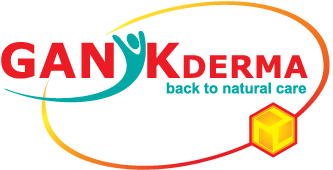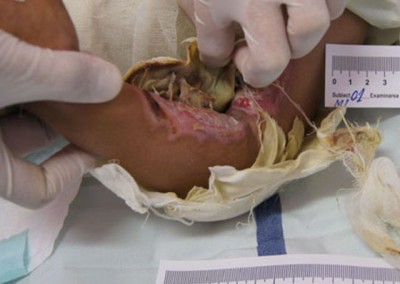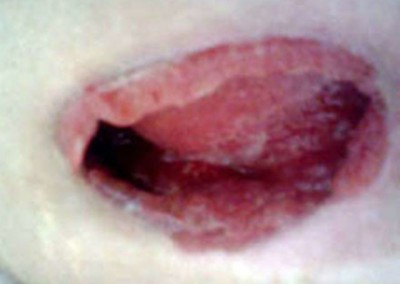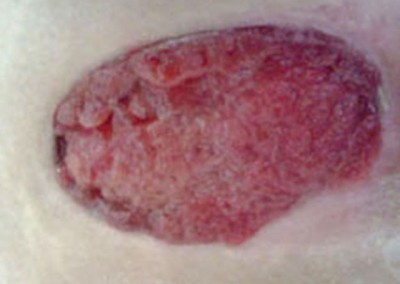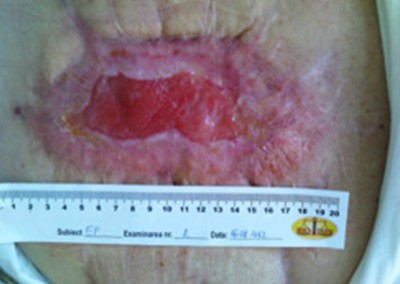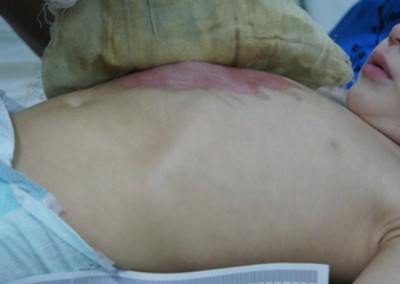Antibacterial action
The antibacterial action of GANIKDERMA® product range is in conformity with the following properties:
| GANIKDERMA® Ointment compound | Constituent | Effect |
|---|---|---|
| Olive oil | Phenolics acid | Antibacterial action |
| Tannins | Antibacterial action | |
| Beeswax | Flavonic derivates (flavonide) | Antibacterial action |
| Ferulic acid | Antibacterial and bacteriostatic action | |
| Colophonium | Antiseptic | |
| Camphor | Antiseptic | |
| Castor oil | Ricinoleic acid | Antibacterial action |
Anti-inflammatory action
Is in conformity with the following GANIKDERMA® ointment properties:
| GANIKDERMA® Ointment compound | Constituent | Effect |
|---|---|---|
| Olive oil | Phenols | Anti-inflammatory action |
| Oleocanthal | Anti-inflammatory action | |
| Sunflower oil | Fatty acids | Anti-inflammatory action |
| Camphor | Anti-inflammatory action |
Wound Debridement
Perform easy and with minimal pain, due to optimum viscosity pf the ointment. Meanwhile, GANIKDERMA® ointment contains moisturizing and absorbing elements with properties that provide autolytic debridement.
Autolytic debridement of second degree burn, after two days of treatment with dressing made with GANIKDERMA® products
Granulation
Apart from a functioning microcirculation, a balanced moist wound environment is another important requirement for the formation of granulation tissue. The progress of healing is disturbed both by drying of the wound and by excessive secretion.
Besides the propertie listed in this section, in granulation phase, GANIKDERMA®:
- Provides natural micronutrients required for protein synthesis: fatty acids, sterols, esters, gliceride, provitamin A, Vitamin C, vitamin E. They are necessary for the proper function of producing collagen, the primary constituent of the granulation tissue that heals a wound and the key component in blood vessel walls.
- Provides the early development of granulation tissue by stimulating epithelial cells, keratocytes and endothelial cells by restoring the skin’s lipid barrier and the production of collagen and elastin.
Pressure sore. A – initial; B – granulation tissue after one month of treatment of with GANIKDERMA® products
Cicatrisation
GANIKDERMA® Ointment provides the proper environment and moreover expedites the process by offering the following solutions:
- Ensures a moist environment
- Stimulates the regeneration of the cells, promote the formation of the collagen and elastin due to the esters content and palmitic acid
- Promote the formation of the tissues due to the Vitamin E, Oleic acid, and Phenolic compounds (antocian, flavonoid, tannins, phenolic acids – see table below)
GANIKDERMA® Ointment prevents hypertrophic scar formation by accelerating and controlling the quality of previous phases of the healing process and maintaining a normal, balanced ratio of fibroblasts to epithelial cells.
In the epithelialisation phase the conditions for mitosis and migration of epithelial cells are improved under moist dressing made with GANIKDERMA® Ointment. This generally leads to rapid epithelialisation with cosmetically more favorable results.
| GANIKDERMA® Ointment compound | Constituent | Effect |
|---|---|---|
| Olive oil | Gliceride | Intracellular matrix; The stimulation of the epithelial cells, keratocytes and endothelial cells |
| Fatty acids | Reinstallation of the lipid barrier of the skin | |
| Sterols | Biochemical functions on cell membrane level; improving the collagen content | |
| Esters | Stimulates the regeneration of the cells; promote the formation of the collagen and elastin | |
| Phenolic compounds (antocian, flavinoid, tannins, phenolic acids) | The stimulation of the regeneration of the tissues | |
| Tocoferolis (Vitamin E) | Promote the formation of the tissues | |
| Vitamin A | Assure the hydration of the tissues | |
| Sunflower oil | Linoleic acid (Vitamin K) | Determinates the granulocyte migration and the macrophage-stimulator in cells growth |
| Oleic acid | Regenerator of the skin cells | |
| Glycerides | Intracellular matrix; The stimulation of the epithelial cells, keratocytes and endothelial cells |
|
| Beeswax | Vitamin A | Assure the hydration of the tissues |
| Esters | Stimulates the regeneration of the cells; promote the formation of the collagen and elastin | |
| Colophonium | Stimulates the blood circulation at the wound level | |
| Castor oil | Linolenic acid | Biosynthesis of the cell membrane |
| Palmitic acid | Intracellular matrix; stimulates the synthesis of the collagen and elastin | |
| Oleic acid | Regenerating of the skin cells |
Pressure sore. A – initial; B – wound cicatrisation after one month of treatment of with GANIKDERMA® product
Nonadherence
The support of GANIKDERMA® impregnated dressing contains an optimal quantity of ointment; it doesn’t adhere to the wound and can be removed without pain and trauma.
Removal of dressing made with GANIKDERMA® impregnated compress from a second degree burn
The above data demonstrates great efficiency of GANIKDERMA® products in treatment of acute wounds (burns) and chronic wounds (pressure sores, leg ulcers and diabetic foot ulcers) in terms of shortening the time of healing, a high quality of epithelization, which has an important meaning in case of patients with burns localized on face or chest.
GANIKDERMA® products provide a favorable microclimate for wound healing by stimulating epithelial cells, keratinocytes and endothelial cells, promotes the vascularization of newly tissues and normal healing mechanisms (wet cell proliferation), also preventing necrosis.
Effective management during treatment results in the removal of excess secretions, which combined with ointment absorbs and maintains an optimal fluid balance.
It also noted the superior efficacy of GANIKDERMA® products in debridement of chronic wounds (pressure sores, leg ulcers, diabetic foot ulcers). Autolytic debridement facilitated by GANIKDERMA® products is painless and in most cases do not require surgical procedures.
No special precautions are necessary regarding use of GANIKDERMA® products, unless the patient is allergic to a component of ointment.
Economic aspects
The total costs per patients could be reduced to up 30% by decreasing the direct costs and indirect costs as well. Direct costs
- In the case of hospital admission:
- the total time of hospitalization is reducing
- the total costs per hospitalization day is reducing
- the total costs per patient is reducing (less dressings, no need for other local topics)
- the case complexity index is increasing
- In the case of ambulatory treatment
- the total treatment days is reducing
- the total treatment costs is reducing (no need for other local topics)
- Indirect costs
- the total days of temporary incapacity is reducing
- the rehabilitation period is decreasing
- the quality of life is increasing
